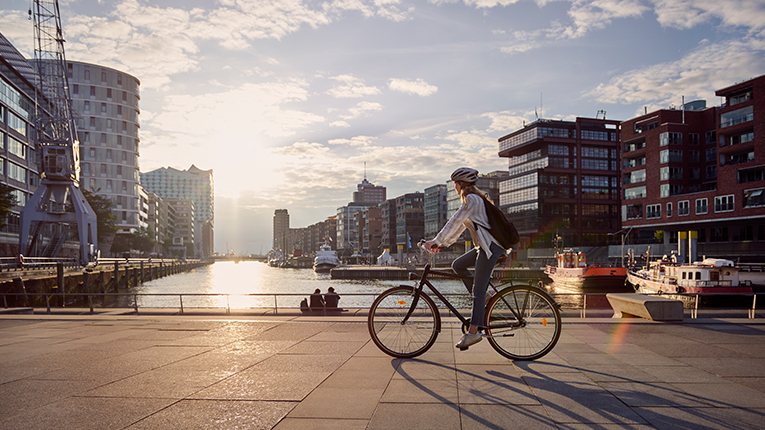
By Ronika Postaria September 22, 2022
The UN SDG 13 (Sustainable Development Goals) to combat climate change intricately links all other goals for Agenda 2030. Cities have unique identities in the globalising world and command much beyond their physical space. They consume two-thirds of the world’s energy, and GHG emissions are at their highest in history. Everything and anything cities choose to do from this point forth demands an integrated approach.
Cities, while occupying only 2 per cent of land area, account for over 70 per cent of global greenhouse gas emissions. Reducing the environmental footprint is vital not only to lower GHG emissions but to have a better quality of life with improved air quality, enhanced public health, a developed local economy, and better job opportunities.
Why aim for an equitable climate action?
At the outset, it is crucial to comprehend why the relationship between sustainability and climate change goes beyond reducing upfront carbon emissions. Individual carbon footprints and the impact of climate change demands a cohesive stance on inequality, equity, justice, and poverty eradication.
With an urbanization level of 56 per cent in 2021 to 68 per cent in 2050, urban areas are expected to accommodate 2.2 billion additional residents. The attached carbon emissions are likely to increase in the business-as-usual scenario. The most critical aspect is providing for the escalating populace using inclusive, low-emission strategies.
Currently, the 100 highest emitting urban areas account for 18 per cent of the global carbon footprint. The largest ecological footprints are of the developed nations due to declining urban densities and increasing suburban sprawl – profoundly increasing energy consumption, GHG emissions, and environmental degradation. Contrastingly, the world’s poorest are the ones who have the smallest carbon footprint, constrained voices in decision-making circles, and yet are most vulnerable to the climate crisis.
On the one hand, the poor remain disproportionately affected by the climate crisis, and on the other, they lack financial assistance for climate resilience measures. A good example is Africa and South Asia taking giant leaps to meet the SDG targets, but with skewed progress. Most urban residents in these nations have inadequate access to resources such as energy, which is a prime factor driving low-carbon growth. For instance, in 2019, 2.6 billion people in the developing world lacked clean cooking facilities, and 759 million people lacked access to electricity. How can we then focus on net-zero targets without considering poverty, inequality, education, and health issues?
Need for inclusion and integration
It is believed that rapidly urbanising cities can rely on a compact urban form to avoid higher future emissions. Simultaneously, established cities can reduce emissions through a modal shift, electrification, and densifying of the building stock.
However, it is imperative to remember that advancing mitigation should not contribute to exacerbated inequalities. Individual, household, and group behaviours and consumption patterns vary in rural and urban contexts– socio-demographic and economic status; access to public infrastructure and services; availability, affordability, and accessibility of sustainable choices; and social and cultural settings –within and between countries. The top 1 per cent of income earners have an average carbon footprint of almost 175 times that of an average person in the bottom 10 per cent. The bottom 50 per cent of emitters contribute only 13-15 per cent of global emissions.
Urban expansion is known to increase per capita consumption-based GHG emissions. At the same time, dissociating energy use and emissions from income growth and sharing global carbon emissions among high emitters may require significant institutional changes. Moreover, societal trade-offs through policy measures to boost the inclusion of low-income populations are critical.
It is, but, a balancing game. On one side, being a global challenge, climate change demands internationally coordinated solutions with peculiar consideration for the aid the developing nations need to move towards a low-carbon economy. Conversely, the solutions must first be localised and based on downscaled assessments. Independent short-term plans with no precise alignment with structural inequalities in the long term will only do more damage. We are at a stage where we have to make up for all the damage done so far and design for a liveable future. Inclusive climate action is significant for fighting climate change.
About the Author
 Ronika is an Urban Planner, and Designer keen on People-oriented design and Sustainable development. Her work primarily focuses on urban planning and research. In the past, she has worked on urban development and policy formulation projects for the government and other public authorities.
Ronika is an Urban Planner, and Designer keen on People-oriented design and Sustainable development. Her work primarily focuses on urban planning and research. In the past, she has worked on urban development and policy formulation projects for the government and other public authorities.
Ronika holds an MSc in International Planning with a specialization in Urban Design from University College London (UCL). She is inclined toward making cities inclusive and liveable by concentrating on the correlation between the public realm, gender, and age.
LinkedIn: https://www.linkedin.com/in/ronika-postaria2895/
Twitter: https://twitter.com/ronika_postaria
By Antonios Vouloudis January 16, 2024
By Satya Tripathi January 16, 2024
By Ronika Postaria September 22, 2022
by Asmeeta Das Sharma, September 22, 2022